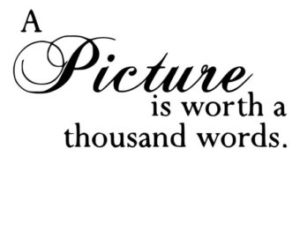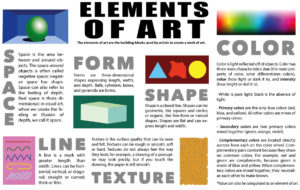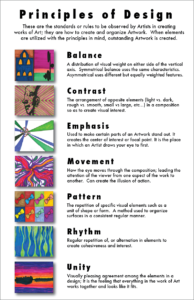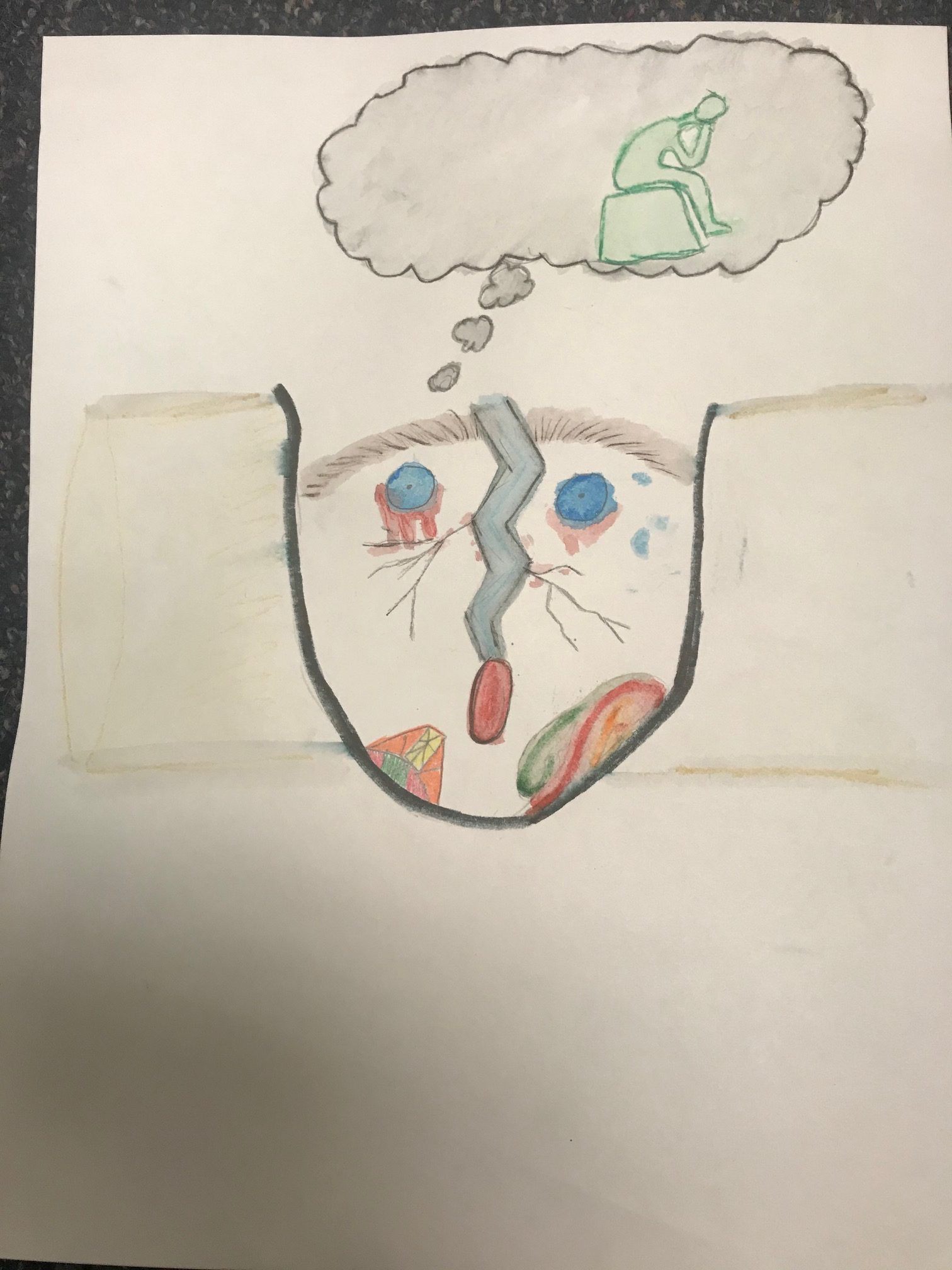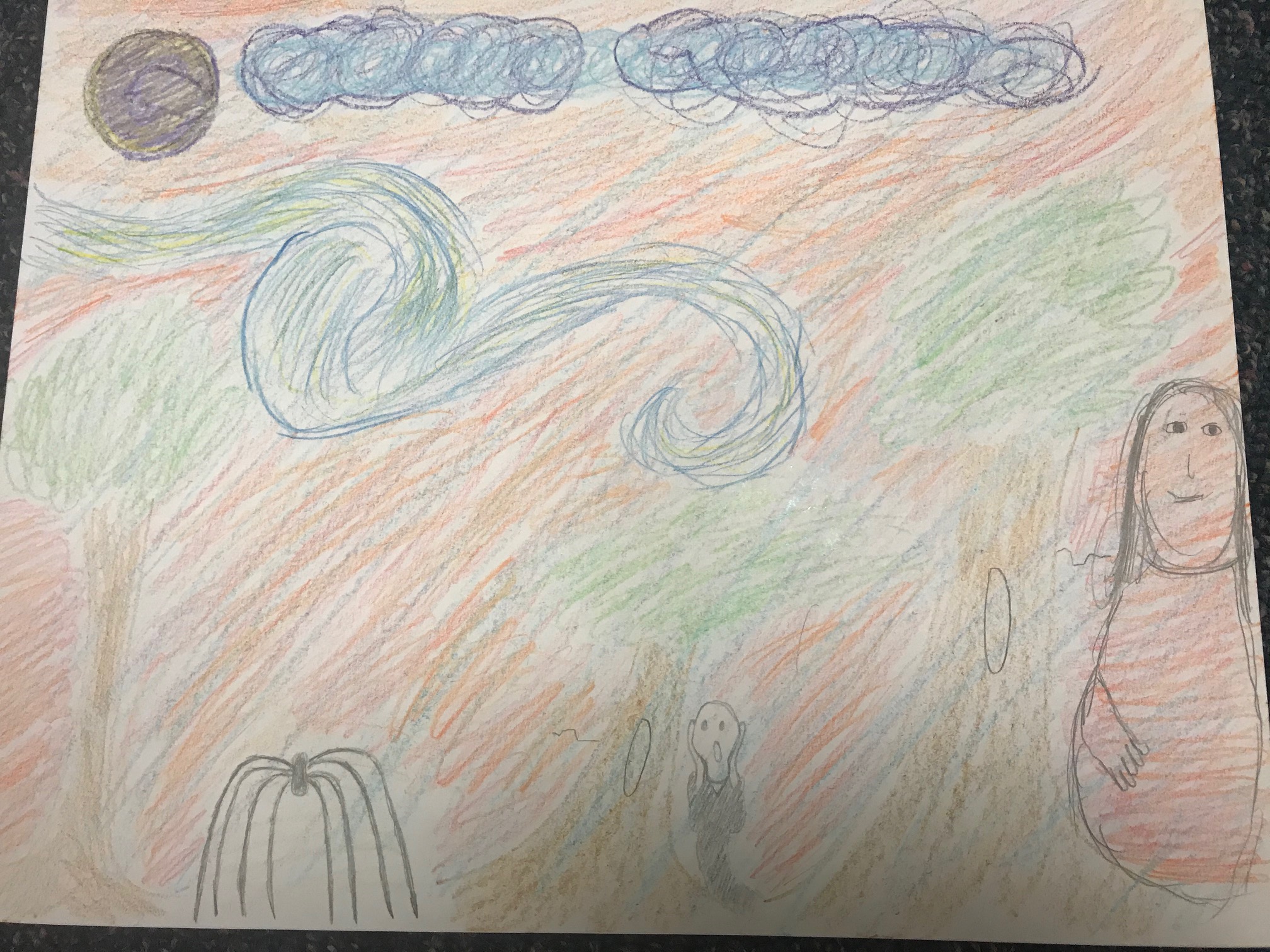Visual literacy refers to the ability to discriminate and interpret visible actions, objects, and symbols and to be able to understand and produce visual images in order to convey meanings. This lesson will explore how shared meanings and emotions are communicated visually and symbolically through art.
Lesson Objectives
- list the basic elements of visual art and how they are used in different ways
- identify the principles of design in visual representations
- evaluate how meanings are expressed visually through a variety of cross-cultural representations
- situate a piece of art in its social and historical context
The Elements of Visual Art
The elements of art are visual components used in a piece of art; color, form, line, shape, space, texture, and value.
- Line is defined as a point moving in space, and it may be two-or three-dimensional, descriptive, implied, or abstract.
- Shape may be two-dimensional, flat, or limited to height and width.
- Form is three-dimensional and enclosesvolume. It includes height, width and depth such as a cube, sphere, pyramid, cylinder, etc). Form may also be free-flowing.
- Value is the lightness or darkness of tones or colors. White is the lightest value, and black is the darkest. The value halfway between these extremes is called middle gray.
- Space refers to positive and negative areas that define or give a sense of depth.
- Color is made up of three properties: hue (the name of the color), value (see above), and intensity (quality of brightness and purity). To learn more about color theory, click here.
- Texture (refers to the way it feels or looks if touched).
Visit the J. Paul Getty Museum Elements of Art weblesson for more details.
Principles of Visual Design
The principles of design refers to the ways that artists use the elements of art in a work of art. The concepts are used to organize or arrange the structural elements of design. The way the principles are applied affects the expressive content and the message of the work.
- Balance is the distribution of the visual elements. If the design is a scale, the elements should be balanced to make a design feel stable. In symmetrical balance, the elements on one side of the design are similar to those on the other side. In asymmetrical balance, the sides are different yet appear balanced. In radial balance, the elements are arranged around a central point.
- Emphasis is the part of the design that catches the eye. This can be achieved through contrast or differences in size, color, texture, shape, etc.
- Movement is the path the viewer’s eye moves through the work of art. The path can be directed along lines, edges, shape, and/or color within the work of art.
- Pattern is the repetition of an object or symbol within the work of art, and this can embed action into the piece. Repeating elements also creates unity within the work of art.
- Proportion is the distribution of size and the visual feeling of unity created when all parts (sizes, amounts, or number) conform well with each other. In a human human figure, for example, proportion may refer to the size of the head in comparison to other parts of the body.
- Rhythm occurs when one or more elements are used repeatedly to create a feeling of movement. Variety is the use of several elements of design to hold the viewer’s attention and to guide the viewer’s eye through and around the work of art.
- Unity is a feeling of harmony between all parts of the work of art, which creates a sense of completeness.
Meaning and Expression through Visual Art
In addition to aesthetic appeal, art can also serve as a tangible representation for unique experiences and abstract concepts such as feelings, emotions and ideas. Some things just cannot be put into words, and art provides artists with a visual means to communicate complex experiences that may be difficult to encapsulate through the limited capacity of language by using artistic elements such as color, media, form, movement, balance, pattern, and proportion. Elements and the way they are used can be a vehicle to communicate meanings that are difficult to express or too complicated to express in conventional ways.
The following PBS Craft in America video entitled Service, illuminates the ways that some U.S. veterans use art and craft to express current or past experiences related to military service.
Social and Historical Contexts
Visual art also represents a compendium of personal stories of the past combined with the pleasures of visual art appreciation. This makes it important to situate art in its social and historical context in order to examine the ways that social experiences and historical themes are communicated and expressed from the unique and personal points of view of the artists. Contextualism refers to a process of looking at the cultural context of an artwork. By situating a piece of art in its social and historical context, it can deepen and/or improve our understanding of the work and may change our first impressions.
Social contexts refers to the social setting in which people live. It includes the broader culture(s) that the individual lives in as well as the people and institutions with whom they interact. It also includes to a person’s social positioning in a household, community or society. It encompasses demographic factors such as age, gender, sex, nationality, sexuality, class, race or any other social status such as citizen, immigrant, undocumented worker, or aristocrat. Learning about the life and time of Robert Mapplethorpe enhances our understanding of the significance of his photography. During the 1970s, Mapplethorpe used visual art to challenge norms and ideas about gender, race and sexuality through the lens of his personal struggles for social and family acceptance in American culture at that time.
Social contexts change through history, however. The experiences of being Robert Mapplethorpe during his time and place could be quite different today. Mapplethorpe’s work was part of a sexual revolution that reshaped norms and values about sex and sexuality in the U.S. Many of the themes considered risque during his time can be considered mainstream today. This makes it important to also address how historical conditions inform social contexts and shape creative processes.
Historical contexts not only refers to the date the work was created, but it also includes the social, political, cultural, economic, and environmental situations that influence and inform an artist’s creative process and individual motivations for expression. In the social context of women, the worldwide struggles for civil rights, human rights, and women’s rights movements dramatically altered the experiences of women. This not only contributed to an increase in women’s participation in the arts, it also created greater diversity in the representation of women and women’s perspectives in visual art. Read the article, ‘The Feminist Artists Whose Work You Need to Know‘ and ‘The Other Art History‘ and visit the Guerilla Girls website to learn more about the ways gender, feminism and history are expressed through visual art.
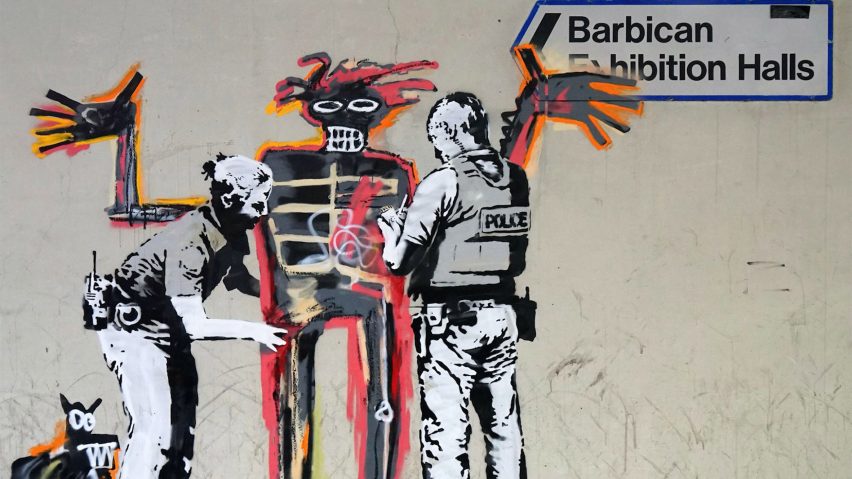
Banksy 2017
Graffiti became a popular platform to express political and social commentaries in the 1970s, and it continues to play a role in politics and social justice throughout the world. Graffiti refers to writing or drawings produced on a public wall or other surface, usually without permission. It can range from simple words in a stylized text to elaborate wall paintings. Although graffiti dates back several thousand years to ancient cave paintings, modern graffiti is controversial because it is considered as vandalism and punishable as a crime. This controversy makes graffiti a subversive art form and underlies the political and social significance of graffiti in justice movements. The documentary, ‘Banksy and the Rise of Outlaw Art’ (2020), explores the development of graffiti and the ways that Banksy’s art addresses social and political problems worldwide.
Banksy’s work builds on a movement launched by Jean Michel Basquiat, an American graffiti artist from Haitian and Puerto Rican descent who revolutionized graffiti in the New York art scene in the 1980s. Basquiat’s art focused on dichotomies such as wealth versus poverty, integration versus segregation, and inner versus outer experience. He integrated poetry, drawing, and painting with text and image as well as historical information. Basquiat used graffiti as a tool for communicating his experiences in the black community and to attack power structures and systems of racism. Review the gallery below and consider they ways that the elements and design of Basquiat’s work reflects his personal and political experiences.
Viewer contexts refers to the ways that viewers of art interpret the piece differently according to the viewer’s unique social and historical circumstances. Viewers engage with and interpret a piece of art differently according to their unique lens. This leads to a wide variety of different viewer interpretations about the messages and meanings conveyed by the work. This is why it is not unusual for two students to analyze the same piece of work, yet come to very different or even opposing interpretations. Neither is right or wrong, they are simply different perspectives and point of views. Learning about the many different interpretations of a single piece of art not only helps us understand the work better, it also contributes to a better understanding of human diversity.
Watch the video below to listen to a conversation about Art and Context related to Monet’s ‘Cliff Walk at Pourville’ & Malevich’s ‘Suprematist Composition: White on White.’
Situating a piece of work in its social and historical context not only helps us develop a better understanding of the work, it also provides a window into the spirit of an age or way of life. It also provides access to the history and perspectives of ordinary people that have been excluded from official documents and historical narratives. This is the case of Malevitch’s pro-Russian revolutionary statement which presents a complicated view of working class struggle. In this way, visual art contributes to our understanding of diversity within the history of humanity.
Analyzing Visual Art
Art analysis provides a means of extracting meanings and emotions from a visual representation by identifying and evaluation specific elements and then compiling the findings to develop an overall conclusion. Analysis not only evaluates the visual components of the work, it also considers the social and historical contexts in which the piece was produced. This requires additional research on the background of the author as well as an investigation into political, social, economic and cultural phenomena taking place during the artist’s lifetime.
- Step one: Provide general information about the work: the artist, subject matter, date, location, technique or medium.
- Step two: Describe the technical aspects of the work. Use the elements of art and the principles of design to describe the techniques the artists used to create the piece.
- Step three: Conceptual Perspective in Context: Interpret concepts, messages and meanings communicated by the piece. What type of symbols are used? Does the artists draw from or build on previous people, places, or events? Use what you know about the social and historical life of the artist to consider how they are visually communicating abstract concepts (thoughts, feelings, emotions, ideas, experiences, etc.) visually. Sometimes a piece of art is accompanied by an ‘artist’s statement’ that provides background, moods, motivation, etc. for the work that can be useful here. Otherwise, just give it your best guess. If the artist is anonymous, such as a cave painting, then consider what you know about the time and place the artist was living in and go from there.
- Step four: Viewer Context: Describe how you interpret the piece through your own lens. In what ways does the piece connect to broader shared human experiences (thoughts, feelings, emotions, etc.) that transcend time and space.
- Step five: Pull it all together to formulate YOUR conclusion or impression of the work. This is your statement about the piece.
Watch the film Dissecting Boticelli below learn more about art analysis and context vis-a-vis the artist.
Visual Art in the Humanities
Visual art provides a symbolic history of the unique experiences, thought and emotions shared by people through history and across cultures. By interpreting visual art, we can develop a more complex understanding of humanity that is more multi-dimensional than descriptive narratives provided by history books because art gives us a wide range of elements that communicate abstract concepts in non-literal ways. Engaging in artistic processes also provides producers, such as war veterans, the opportunity to express deep emotions and complicated experiences to a broader audience.
References and Resources
To learn more about different approaches to art and art analysis, explore the links below.
- Guidelines for Art Analysis UA Little Rock
- Visual Analysis. Duke Writing Studio
- Art Historical Analysis using Goya’s Third of May, 1808 Khan Academy
- How to Analyze An Art work: step-by-step guide
- Shahla Nakhost Isfahani (2008) Art therapy with a young refugee woman – survivor of war, International Journal of Art Therapy, 13:2, 79-87
- Alexander Kopytin & Alexey Lebedev (2013) Humor, Self-Attitude, Emotions, and Cognitions in Group Art Therapy With War Veterans, Art Therapy, 30:1, 20-29
- Suh, Yonghee. Past Looking: Using Arts as Historical Evidence in Teaching History. Social Studies Research and Practice.
- ‘Scrutinizing History through Art,’ in Artfully Learning
For Discussion in Canvas
Select a work of visual art (painting, drawing, sculpture, photography, etc.). Post an image of the piece and conduct an analysis of the piece using the analytical tools presented in the lesson. Respond to the analysis of at least two other students in the discussion. Consider how the students interpretation did or did not affect your impression of the work. If you analyzed the same work as another student, comment on the similarities and differences between your interpretations.
Resources: Artstor, MOMA, Artspace
For Journal Expression
Imagine that you and the artist who produced the piece that you analyzed are going to do a collaborative piece. Integrate the elements of their art into your work. Provide a brief explanation of your piece identifying the artists and how you incorporated their style.
Below is an example of previous student work – can you identify the artists in the collaboration?
For Extra Credit
Art Galleries and Festivals offer a public benefit by providing access to art education and experiences to everyone in the community. To earn extra credit, visit the Art Gallery and Art Walk webpages.

